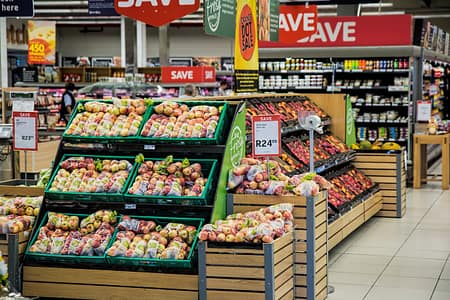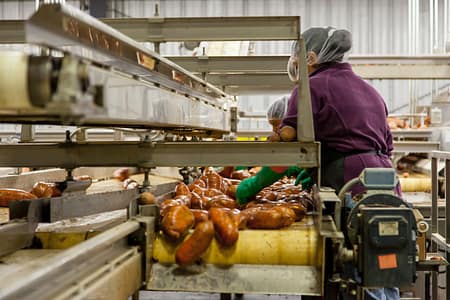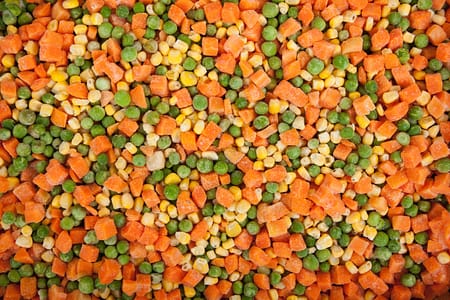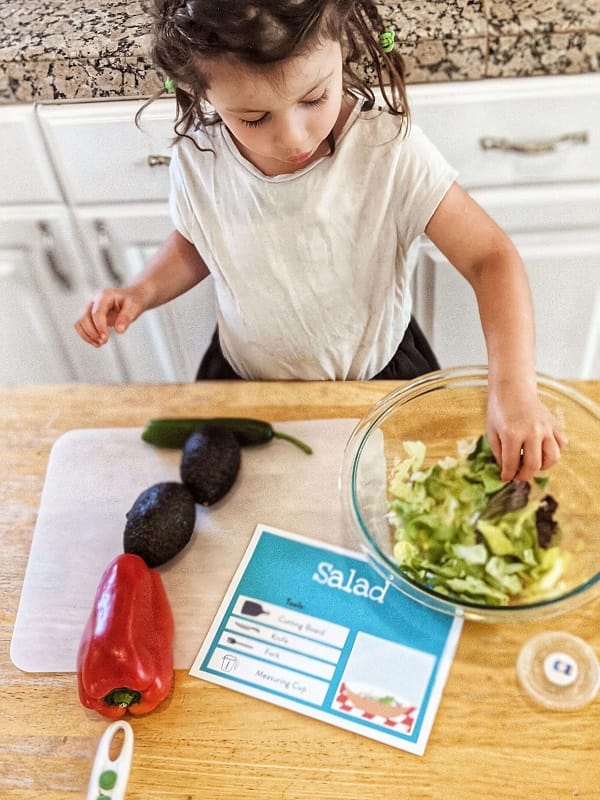I had the pleasure of speaking with Dr. Melissa Pflugh Prescott. She’s a professor at the University of Illinois, where she’s spent the last 6 years researching food waste. Not only is she an expert in food waste, she’s also a mom of two kids, ages 5 and 7. So here’s her advice on how busy parents can make meaningful changes at home.
Q: So, based on all of the research, what are the biggest contributors to food waste?
Consumer food attitudes and purchasing behaviors are actually some of the biggest contributors to food waste. Some of that is our desire to eat the freshest food possible and confusion over food safety. (Just because produce is wilting, doesn’t meant that it is unsafe to eat, for example.)
Some people will also overestimate how much food they actually need and then end up tossing the extra. Or they don’t properly store their food and it ends up spoiling before they have a chance to eat it.

Q: What would improving our shopping habits look like?
Shopping habits are very personal, so there isn’t just one simple thing that would solve this. Really, the best thing individuals can do is pay attention to their habits. Are they buying more salad than their family eats? Do they practice “first in first out” for the dairy in their fridge?
The best thing anyone can do is take a look at what gets thrown out and start to look for patterns. And from there, be open to trying something new. We’re currently studying people who are great at avoiding waste to see what the commonalities are.
Q: What's the most surprising thing about food waste?
Food production and processing are huge contributors to climate change. So when you throw out an orange, the waste isn’t JUST the orange. It’s also “invisible waste” which is how much trees were watered.
It’s also the labor that went into growing, transporting the food, and greenhouse gas for the transportation and the miles that you went to purchase it from your grocery store. That is all being wasted as well. Especially when you need refrigerated trucks, the greenhouse emissions are large.

Q: What happens to food that's thrown out?
Actually, the biggest issue isn’t the food in the landfill, but all of the wasted resources that went into producing that food and getting it into your home.
Often people think that if they compost their wasted food that they are not contributing to climate change, but this is untrue. All of the greenhouse gas emissions that occurred to produce and process whatever food that you composted still contribute to climate change.
When you throw food away, it goes to the dump and it degrades over time. The methane released when it decomposes is higher than what happens when people eat the food.
If you do have extra food, the best thing you can do is give it to someone else, or use it to feed animals.

Q: Are their certain foods that impact the environment more than others?
Generally, a lot of research supports that animal based foods, milk, eggs, seafood, meat have the most environmental effects. For example: The feed for cows is oftentimes shipped in. So now we also have to factor in all of the resources that went into producing and shipping the cows’ food.
But plants can also have big environmental impacts. Almonds, for example, use a lot of water. So it’s really important to be mindful about how many resource went into your almond milk.
Eating local is sometimes touted as environmentally positive, but it’s not always so clear cut. It really depends a lot on how the local food is grown and shipped. That being said, there are still many benefits to purchasing local, because it does help to support the local economy.

Q: What are some things that busy parents can do to help reduce the amount of food that ends up in the trash?
Really the best thing is to do good job of preparing and serving what is needed for your household.
When you have young kids, this may look like offering small portions. You can always give your child more food, but anything that they don’t touch that’s on their plate ends up being waste.
This is a really good tactic to use when you’re introducing a new food. Not only are larger portions more wasteful, but they’re also overwhelming for a child who is unfamiliar with what’s being served.
You can also use frozen fruits and vegetables. That allows you to use what you need and then keep the rest, without the issue of fresh product going bad.
Another change you can make is to eat a flexitarian diet. People may not think about this, but the forest land that is used to raise animals has an environmental impact. Forest land is being cleared for cattle pasture, which is a large contributor to climate change.

Q: What is the big takeaway for parents?
This is a really important issue and it’s not just going to be one simple fix.
But it’s great that people are becoming more aware about how their food choices impact the environment. So we can re-evaluate how we’re doing things and then try to do things more effeciently.

